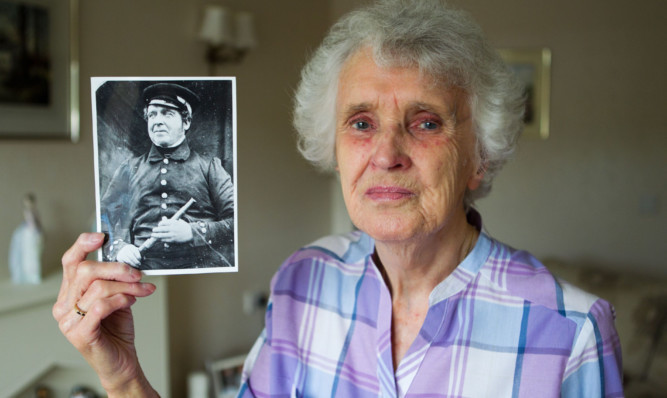
A descendent of a sailor who died on a polar expedition has offered her DNA for testing in the hope it will help identify him.
Last week we told how scientists hoped they had found the remains of a missing Scottish sailor.
James Reid vanished during the ill-fated Franklin mission to find the North West Passage along with his crewmates.
The exclusive Sunday Post story prompted relatives of Reid to contact the paper.
Now Canadian scientists hope a DNA sample from Catherine Wiseman might match that of sailor Reid, bringing to a close a 170-year mystery.
Former legal secretary Catherine’s gran was the tragic whaler’s granddaughter, making her a direct descendent.
Catherine, 82, a widower with no children from Dunblane, said: “I’ve known I was related to James Reid for around 30 years.
“My brother William and I began researching our family tree and discovered we were descendants through his daughter.
“It’s very poignant that after all these years I might be able to help identify him.
“It’s amazing that we’ve had to wait all these years for science to advance to a level where we could get an answer.”
The Aberdonian seaman was part of a pioneering polar expedition under the stewardship of Sir John Franklin who tried to navigate the Northwest passage
off the coast of Canada 170 years ago.
But all of the 130 crew on-board the two naval ships HMS Erebus and HMS Terror met a grisly death after their ships got stuck in a thick pack ice a year in.
Reports of the crew turning to cannibalism while they slowly succumbed to disease and starvation scandalised Victorian society.
None of the 130-strong crew’s remains have ever been identified until now, it is hoped.
Dr Doug Stenton, the Director of Heritage for the Government of Nunavut Department of Culture and Heritage, who has led archaeological digs on sites associated with the 1845 failed expedition, said they have now contacted Catherine with a view to obtaining a DNA sample from her.
He said: “I have spoken with Catherine and added her to a list of people we may carry out DNA tests on.
“We are still working on who will be best possible candidates for DNA testing and would urge anyone else connected with James Reid to come forward.”
Boffins in Canada hope to identify James Reid after a forensic breakthrough earlier this year.
Renowned police artist Diane Trepkov used pioneering reconstruction techniques used in missing person cases on two skulls found in 1993, believed to belong to the crew.
The remains were found close to the last known location of the Erebus in 1847.
One of the recreated faces bears an uncanny resemblance to Reid, who had his picture taken on the eve of the doomed voyage.
It is believed some of his children emigrated to Australia after his passing but his wife died in Aberdeen.

Enjoy the convenience of having The Sunday Post delivered as a digital ePaper straight to your smartphone, tablet or computer.
Subscribe for only £5.49 a month and enjoy all the benefits of the printed paper as a digital replica.
Subscribe